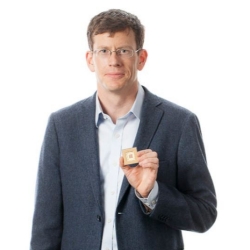Data centres are like cars: high-speed transmission requires more energy than low-speed transmission.
The number of IoT devices is expected to increase by 18% to 14.4 billion this year and could reach 27 billion by 2025 (IoT Analytics). With this increase, data centres around the world will need to handle higher data transfer rates which in turn require more energy.
However, the peak data rate is not required at all times and even when a link is not used at its full capacity, unneeded data is still being sent to maintain synchronization.
In a recent paper published in IEEE Transactions on Very Large Scale Integration, PhD student Abdullah Ibn Abbas, Master's student Xiangdong Jia and Glenn Cowan present a new optical receiver design that would allow a data centre to operate and rapidly switch between two different transmission rates (high data rate at 8 Gb/s and low data rate at 4 Gb/s), depending on the demand. They are all researchers in the Department of Electrical and Computer Engineering at the Gina Cody School of Engineering and Computer Science.
In data centres, an optical receiver sits at one end of a high-speed, point-to-point connection between two network devices, such as servers, connected by optical fiber.
By using a dual-bandwidth approach, the system can optimize the use of bandwidth and power consumption resulting in a more energy-efficient design.
Their new design focuses on the front-end of the optical link. The front-end refers to the first stage of the optical receiver circuit that receives and amplifies the optical signal from the optical fiber. The front-end is a critical component of the receiver as it sets the sensitivity and noise characteristics of the receiver and can significantly impact the overall performance and energy efficiency of the system. They designed and fabricated a chip using a commercial CMOS process and measured the chip along with a photo detector. Although demonstrated at modest data rates, the proposed technique is applicable to higher data rates if chips are fabricated in a smaller CMOS process.
If adopted, the newly proposed data-rate switching technique would enhance the efficiency of data centres by reducing energy consumption, resulting in cost savings and improved sustainability.
Read “A Power-Proportional, Dual-Bandwidth, and Constant-Delay Receiver Front-End for Energy-Efficient Dual-Rate Optical Links” in IEEE Transactions on Very Large Scale Integration (VLSI) System.
Related works: A Receiver Front-End for VCSEL-Based Optical Links With 49 UI Turn-On Time and Fast-Locking Burst-Mode Clock and Data Recovery for Parallel VCSEL-Based Optical Link Receivers.


